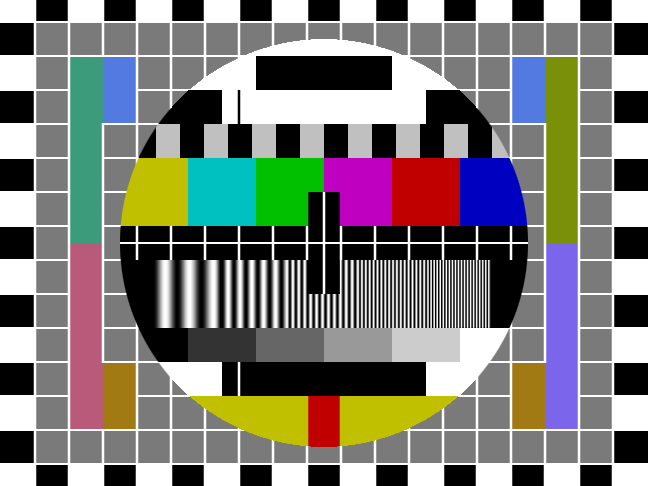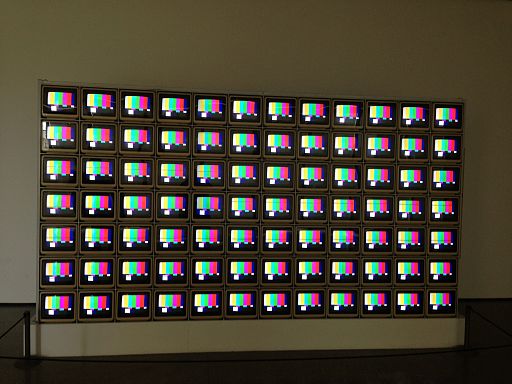PAL (Phase Alternating Line) and NTSC (National Television System Committee) are video broadcast standards, with PAL common in Europe and NTSC in North America, affecting frame rates and resolution.
TL;DR PAL Vs. NTSC
Both PAL and NTSC are video encoding systems used for television broadcasting around the world. While PAL is predominantly used in Europe, Asia, and Oceania, NTSC is commonly used in North America and parts of South America.
The key differences between PAL and NTSC lie in their frame rates, resolution, color representation, and compatibility. PAL operates at a frame rate of 25 frames per second (fps) with a resolution of 720×576 pixels. On the other hand, NTSC has a slightly higher frame rate of 30 fps but lower resolution at 720×480 pixels.
What is PAL?

PAL, short for Phase Alternating Line, is a video format that was developed in Europe back in the 1960s. It quickly became the standard for television broadcasting across many countries, including most of Europe, Australia, and parts of Asia. PAL operates with a refresh rate of 50 Hz and uses 625 lines to display images on the screen.
One of the notable features of PAL is its superior color reproduction. With PAL, you can expect more vibrant and accurate colors compared to other video formats. This is achieved by dividing each frame into two separate fields – odd and even lines – which are then displayed one after another rapidly. The alternating phase technique used by PAL ensures that any flickering or distortion caused by interlacing is minimized.
Furthermore, PAL offers better compatibility with older analog equipment due to its lower frame rate and higher resolution than NTSC (which we’ll get into later). This makes it easier for users to transition between different devices without compromising picture quality.
In terms of audio support, PAL supports stereo sound transmission along with multichannel audio options such as Dolby Digital. So whether you’re watching your favorite show or enjoying a movie night at home, rest assured that the audio will be crystal clear.
What is NTSC?

NTSC, which stands for National Television System Committee, is a video format used in countries such as the United States, Canada, Japan, and parts of South America. It was developed in the 1940s and became the standard for analog television broadcasting.
This system uses 525 lines per frame and a refresh rate of 60Hz. The resolution is lower compared to PAL (Phase Alternating Line), with a vertical resolution of 480i. This means that NTSC has fewer lines of detail, resulting in slightly less clarity.
One notable characteristic of NTSC is its color encoding method. It employs composite video signals where luminance (brightness) and chrominance (color information) are combined into one signal. This can lead to certain color accuracy issues on some displays or when converting between different video formats.
Despite its limitations, NTSC has been widely adopted due to its compatibility with older televisions and equipment. However, it’s important to note that most modern TVs support both NTSC and PAL formats through built-in converters.
While NTSC may not offer the highest quality picture compared to other standards like PAL, it remains an important part of television history and continues to be used in many regions around the world today.
PAL Vs. NTSC – Key differences
| Criteria | PAL (Phase Alternating Line) | NTSC (National Television System Committee) |
|---|---|---|
| Regions | Common in Europe, Asia, Africa, Australia | Common in North America, parts of South America, Asia |
| Frame Rate | 25 frames per second (fps) | 30 frames per second (29.97 fps) |
| Resolution | 720x576 pixels (Standard Definition) | 720x480 pixels (Standard Definition) |
| Color Encoding | 4.43 MHz color subcarrier | 3.58 MHz color subcarrier |
| Refresh Rate | 50 Hz | 60 Hz |
| Electric System Compatibility | 50 Hz | 60 Hz |
| Color Representation | More accurate colors | Slightly less accurate colors |
| Adoption | Widespread in Europe, Asia, Africa, Australia | Predominant in North America, parts of South America |
| Compatibility | PAL devices may not work with NTSC devices | NTSC devices may not work with PAL devices |
Note: While these are general standards, advancements in technology have led to devices and systems that support both PAL and NTSC, reducing compatibility issues.
Advantages and Disadvantages of PAL and NTSC
PAL (Phase Alternating Line) Advantages:
Better Color Accuracy:
PAL offers superior color accuracy due to its higher color subcarrier frequency (4.43 MHz), resulting in more realistic and vibrant colors.
Smoother Motion:
With a frame rate of 25 frames per second (fps), PAL provides smoother motion, especially in fast-paced scenes, making it favorable for broadcast and film.
Electric System Compatibility:
PAL operates on a 50 Hz refresh rate, which is more compatible with the 50 Hz electric system common in many parts of the world, reducing flickering issues.
PAL Disadvantages:
Lower Frame Rate:
The PAL frame rate of 25 fps is lower than the NTSC frame rate, which can impact the smoothness of motion in certain video content.
Incompatibility with NTSC:
PAL devices may not be compatible with NTSC devices, causing issues when trying to play or display content across different standards.
Lower Vertical Resolution:
PAL has a slightly lower vertical resolution (576 pixels) compared to NTSC, which may affect the overall image quality.
NTSC (National Television System Committee) Advantages:
Higher Frame Rate:
NTSC operates at a frame rate of 30 fps (29.97 fps), providing slightly smoother motion compared to PAL.
Widespread Adoption:
NTSC is the predominant standard in North America and parts of South America, making it widely adopted in these regions.
Compatibility with 60 Hz Systems:
The 60 Hz refresh rate of NTSC is compatible with the 60 Hz electric system used in North America, minimizing flickering issues.
NTSC Disadvantages:
Color Accuracy:
NTSC has slightly less accurate colors compared to PAL due to its lower color subcarrier frequency (3.58 MHz).
Lower Horizontal Resolution:
NTSC has a slightly lower horizontal resolution (720 pixels) compared to PAL, which may impact image sharpness.
Electric System Incompatibility:
NTSC may experience compatibility issues with the 50 Hz electric system used in many parts of the world, leading to potential flickering problems.
Image Credits
Featured Image By – User:Eddyv16, CC BY-SA 3.0, via Wikimedia Commons
Image 1 By – Pexels from Pixabay
Image 2 By – Wbwn, CC BY-SA 3.0, via Wikimedia Commons








